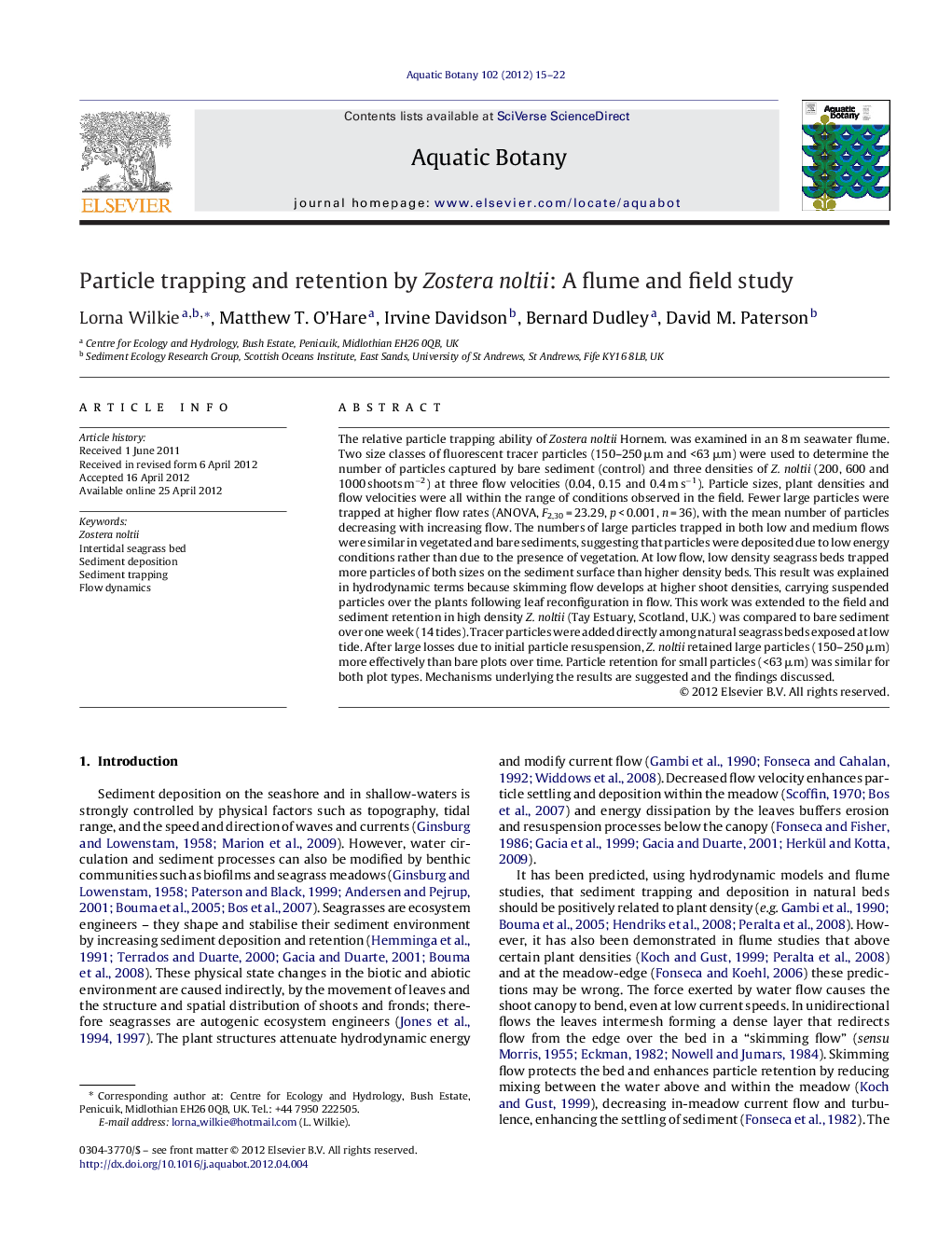| کد مقاله | کد نشریه | سال انتشار | مقاله انگلیسی | نسخه تمام متن |
|---|---|---|---|---|
| 4527936 | 1625840 | 2012 | 8 صفحه PDF | دانلود رایگان |

The relative particle trapping ability of Zostera noltii Hornem. was examined in an 8 m seawater flume. Two size classes of fluorescent tracer particles (150–250 μm and <63 μm) were used to determine the number of particles captured by bare sediment (control) and three densities of Z. noltii (200, 600 and 1000 shoots m−2) at three flow velocities (0.04, 0.15 and 0.4 m s−1). Particle sizes, plant densities and flow velocities were all within the range of conditions observed in the field. Fewer large particles were trapped at higher flow rates (ANOVA, F2,30 = 23.29, p < 0.001, n = 36), with the mean number of particles decreasing with increasing flow. The numbers of large particles trapped in both low and medium flows were similar in vegetated and bare sediments, suggesting that particles were deposited due to low energy conditions rather than due to the presence of vegetation. At low flow, low density seagrass beds trapped more particles of both sizes on the sediment surface than higher density beds. This result was explained in hydrodynamic terms because skimming flow develops at higher shoot densities, carrying suspended particles over the plants following leaf reconfiguration in flow. This work was extended to the field and sediment retention in high density Z. noltii (Tay Estuary, Scotland, U.K.) was compared to bare sediment over one week (14 tides). Tracer particles were added directly among natural seagrass beds exposed at low tide. After large losses due to initial particle resuspension, Z. noltii retained large particles (150–250 μm) more effectively than bare plots over time. Particle retention for small particles (<63 μm) was similar for both plot types. Mechanisms underlying the results are suggested and the findings discussed.
► Small patches (0.25 m × 0.2 m) of Z. noltii do not trap more particles than patches of bare sediment.
► In small patches of Z. noltii, particle trapping does not increase with increasing grass density.
► Sediment trapping by Z. noltii decreases with increasing flow.
► Z. noltii decreases the loss of large particles (>150 μm) through resuspension.
► Z. noltii does not influence the loss of small particles (<63 μm).
Journal: Aquatic Botany - Volume 102, October 2012, Pages 15–22